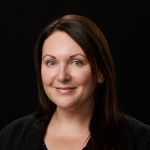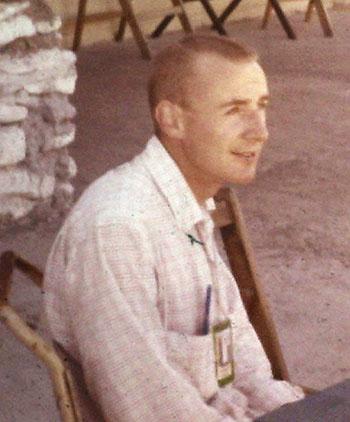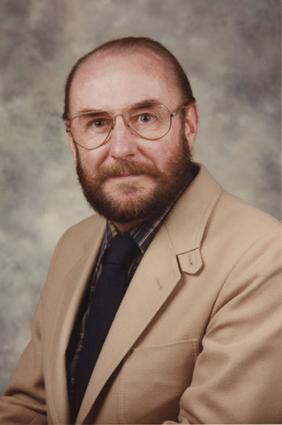60 years of service to the nation
 (Download Image)
This year marks the 60th anniversary for Dan Patterson at Lawrence Livermore. The nuclear weapons designer started at the Lab in 1955 and continues his career today. Photo by Julie Russell/LLNL
(Download Image)
This year marks the 60th anniversary for Dan Patterson at Lawrence Livermore. The nuclear weapons designer started at the Lab in 1955 and continues his career today. Photo by Julie Russell/LLNL
After finishing his education in physics at Sacramento State, Dan Patterson applied at Lawrence Livermore National Laboratory at the recommendation of his adviser. As part of his interview, he worked on a few physics problems and filled out paperwork for a potential clearance. Six weeks later, he finally got a call asking him to report to work.
It was 1955. Little did he know, that first day of work would be the beginning of a 60-plus-year career at LLNL — one that continues today.
"I’ve learned something about the business every day," Patterson said. "That’s what this place is about."
Over those years, Patterson has transformed from physics student into one of the world’s foremost nuclear weapons designers. His good humor, warmth and modesty overlay a deep technical knowledge and a creative and incisive nature — all of which has been dedicated to solving some of the greatest scientific challenges the nation has faced over the past six decades.
"Dan personifies all of the best characteristics of the Lab: dedication, expertise and a willingness to take on really difficult jobs," said Bruce Tarter, LLNL director from 1994-2002. "His personal commitment to the institution serves as a role model to the rest of us."
Patterson’s tenure at the Laboratory has seen him play a role in a wide variety of programs and technical areas. In addition to leading in a significant number of weapons design projects, he played roles in proton optical scattering models, code work, seismic yield determination, earth penetration, X-ray lasers and more. In addition, he’s served as a designer, group leader, program manager, associate division leader and interim division leader.
"Dan’s influence is everywhere," said Richard Ward, deputy division leader for Design Physics. "My experience has been that everyone wants to be on his team. Dan dreamed of things that never were and asked ‘why not?’ "
According to Patterson, some of the most significant contributions of his career were his work on the Spartan and MK500 Design Programs. "These systems helped to encourage foreign countries to sign treaties," he said. "They made a big impact on the political landscape."
Changing landscapes have been the norm over the course of Patterson’s career. He’s seen atmospheric testing go underground then cease altogether, followed by the rise of the Stockpile Stewardship Program. He’s watched the tools that support stockpile work transform from UNIVAC computers with thousand-word memories to 20-petaflop machines like Sequoia. Experiencing these changes, and adapting to them, has built a massive knowledge base that Patterson has generously shared with five generations of designers.
"I thank Dan for his willingness to share the knowledge and wisdom he’s gained over the years with our new generations of stewards," said Charlie Verdon, head of LLNL’s Weapons and Complex Integration Principal Directorate. "While their experience base is now significantly different from Dan’s, hearing and learning from him on how tests were approached in the past and how that experience can be applied to current and future challenges represents an invaluable resource to Livermore and to the nation."
Not only did Dan find his life’s work at Livermore, he found a marriage that has endured for nearly as long as his career. His wife, Judy, whom he met at a dinner party, also worked at the Lab. "She had a Q clearance, so she understood what we were doing," Patterson said. "Her support was what kept me solidly on the job."
Reflecting back on the last 60 years, Patterson wouldn’t change a thing.
"It’s been great," he said. "I think I’ll go for another 60."
Contact
 Breanna Bishop
Breanna Bishop
[email protected]
(925) 423-9802
Related Links
LLNLTags
Nuclear deterrenceStockpile stewardship
Careers
Featured Articles









